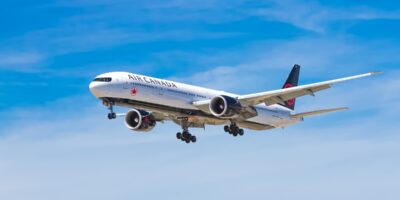Aircraft Wiring Harness
Aircraft wiring harnesses play a vital role in the function and safety of modern airplanes. These complex yet structured systems of wires, connectors, and terminals are essential for operating an aircraft’s electrical systems. Each wiring harness is unique to its specific aircraft model, meticulously designed and checked to meet stringent standards.
Components of Aircraft Wiring Harnesses
An aircraft wiring harness consists of several components, including:
- Wires: Conduct electricity to various parts of the aircraft.
- Connectors: Join different wires together, ensuring a secure and stable connection.
- Terminals: Points where wires connect to critical components or systems.
- Insulation: Protects wires from environmental damage, such as heat, moisture, and abrasion.
- Protective coverings: Shield the harness from physical damage and interference.
These components work together to ensure the reliability and safety of an aircraft’s operations.
Design and Manufacturing
Designing an aircraft wiring harness involves several steps. Engineers first create a schematic diagram, outlining the electrical circuits required. This schematic serves as a blueprint, detailing the routing, connections, and specifications of each wire. The design must comply with aviation regulations and standards to ensure safety and performance.
Once the schematic is finalized, the manufacturing process begins. Specialized machinery and tools are used to cut, strip, and crimp wires. Connectors and terminals are then attached, and the entire assembly is tested for continuity and functionality. The harness is also inspected for any defects or inconsistencies.
Quality control is crucial during this phase. Any flaws or errors can lead to severe consequences. Therefore, rigorous testing and inspection are mandatory to certify the harness as airworthy.
Installation and Maintenance
Installing an aircraft wiring harness requires precision and expertise. Technicians follow detailed instructions to route and secure the harness within the aircraft. Proper installation is critical to avoid interference with other components and to maintain the integrity of the electrical system.
Regular maintenance is essential for the longevity and reliability of wiring harnesses. Inspections are conducted to check for signs of wear, corrosion, or damage. Components may need to be replaced to prevent potential failures. Maintenance protocols vary depending on the aircraft type and usage but typically involve routine checks and thorough inspections at specific intervals.
Common Challenges
Aircraft wiring harnesses face several challenges, including:
- Environmental factors: Heat, humidity, and vibration can affect the integrity of the harness.
- Space constraints: Aircraft have limited space, requiring efficient routing and organization of wires.
- Weight considerations: Lightweight materials are preferred to minimize the aircraft’s overall weight.
- Compatibility: Ensuring compatibility with various components and systems is critical.
Addressing these challenges requires innovative design and materials. Engineers continuously work on developing advanced solutions to enhance the durability and performance of wiring harnesses.
Technological Advancements
The aviation industry has seen significant technological advancements in wiring harness design and manufacturing. Automation and computer-aided design (CAD) have streamlined the design process, allowing for more precise and efficient creation of schematics. Advanced materials, such as lightweight composites and improved insulation, enhance the durability and performance of wiring harnesses.
Innovations in testing and inspection technologies also play a significant role. Non-destructive testing (NDT) methods, such as X-ray and ultrasound, allow for thorough examination without compromising the integrity of the harness. These advancements contribute to the overall safety and reliability of aircraft wiring systems.
Regulations and Standards
The aviation industry is heavily regulated to ensure the safety and reliability of aircraft. Several organizations, including the Federal Aviation Administration (FAA) and the European Union Aviation Safety Agency (EASA), set stringent standards for the design, manufacturing, and maintenance of aircraft wiring harnesses.
Compliance with these regulations is mandatory. Manufacturers must adhere to specific guidelines and undergo rigorous testing and certification processes. These standards cover various aspects, such as materials used, electrical and mechanical properties, and environmental resistance.
Future Trends
The future of aircraft wiring harnesses is promising, with several exciting trends on the horizon. One key trend is the integration of smart technology. Smart wiring harnesses incorporate sensors and monitoring systems to provide real-time data on the performance and health of the electrical system. This data can be used for predictive maintenance, identifying potential issues before they become critical.
Another trend is the increased use of wireless technologies. Wireless systems can reduce the complexity and weight of wiring harnesses. However, ensuring the security and reliability of these systems is essential to avoid potential vulnerabilities.
Green aviation initiatives are also influencing the future of wiring harness design. Eco-friendly materials and manufacturing processes aim to reduce the environmental impact of aircraft production. Lightweight and efficient wiring systems contribute to fuel savings and reduced emissions.
Conclusion
Aircraft wiring harnesses are indispensable components of modern aviation. Their design, manufacturing, and maintenance require precision, expertise, and adherence to strict regulations. Technological advancements and future trends promise to enhance the performance, safety, and sustainability of these critical systems.
“`



